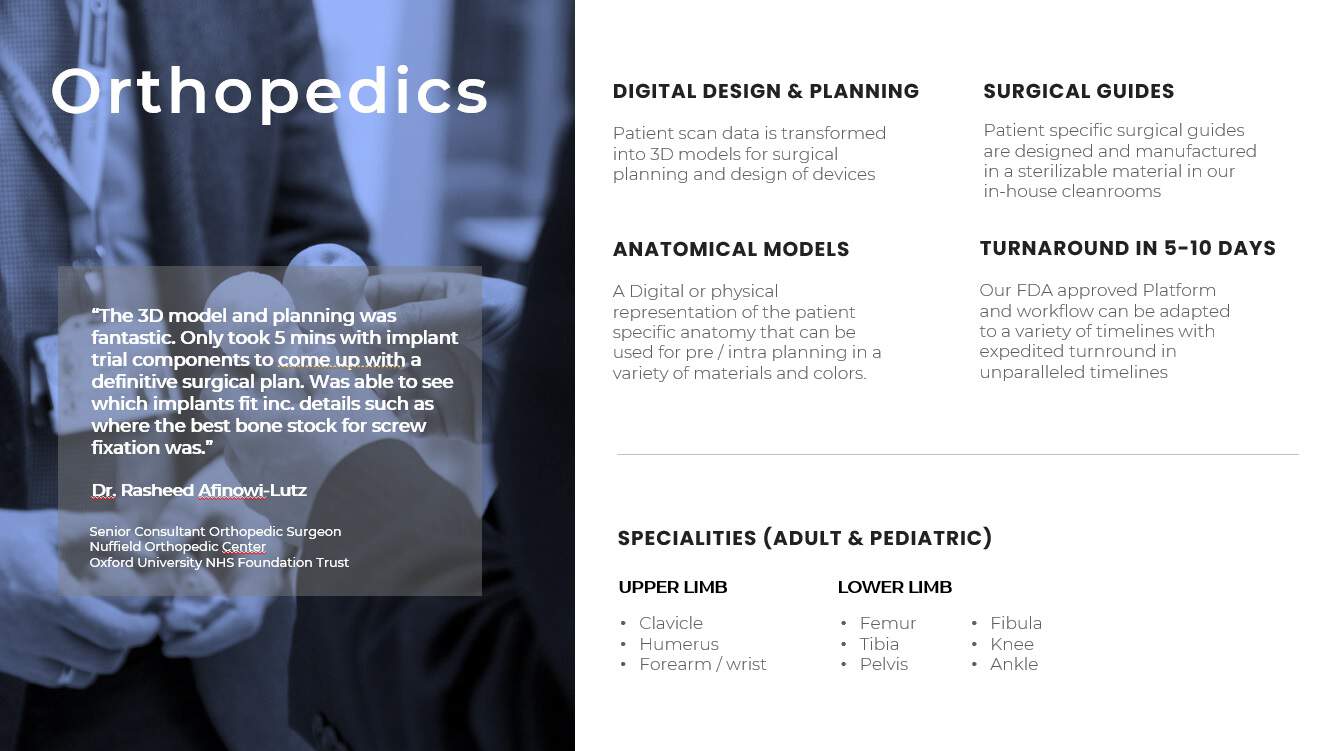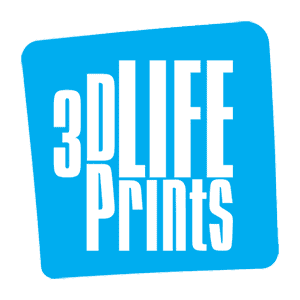
Case Examples: Upper and Lower Body Orthopedic Solutions
Madelung’s deformity of the wrists – Digital Planning, Models, Guides for an off-the-shelf plate
The deformity included a collapsed volar rim of the radius (increasing the likelihood of subluxation), and positive ulna variance. The surgeon requested a 3D reconstruction of the patient’s anatomy and patient-specific guides for the left radius that would facilitate the restoration of the distal radial surface and also correct the ulna variance.
Outcome / Benefits
The virtual and physical 3D models of the patient’s anatomy provided the surgeon with an additional medium by which to understand the pathology of the wrist. It also allowed them to identify limitations to a surgical approach, the dome osteotomy, that they may have otherwise missed. Overall the surgery proceeded as planned with the guides producing highly accurate osteotomies and the plate locating onto the corrected anatomy.
Mid-femur apex anterior deformity – Digital Planning, Models & Guides
This patient required correction and primary hip arthroplasty. The surgeon requested 3D digital planning and the provision of a patient-specific surgical cutting guide to perform the proposed closing wedge osteotomy. CT scans of the pelvis / & proximal femurs were used to create a 3D digital model. Guided by the surgeon, the contralateral femur was mirrored in order to establish a balanced correction of the right femur. The guide was designed to fix onto the lateral aspect of the right femur mid-shaft, reaching the posterior medially, to take advantage of the Linea Aspera for anchorage. A small ridge proximal to the osteotomy was also used to anchor the guide.
Outcome / Benefits
Originally it was envisioned two cutting guides would be required, however using Insight Surgery’s virtual planning service alongside the custom guide in theater, the surgeon was able to achieve the desired resection using a single guide. Post-op radiography showed the correction was achieved in line with what was expected with the surgical plan. The patient was discharged after 9 days with no issues reported. Post-surgery, the lead surgeon reported they “were very impressed – with the design input, communication, intra-op support, fit of the jig, and finally the ease and accuracy of the resection”.

